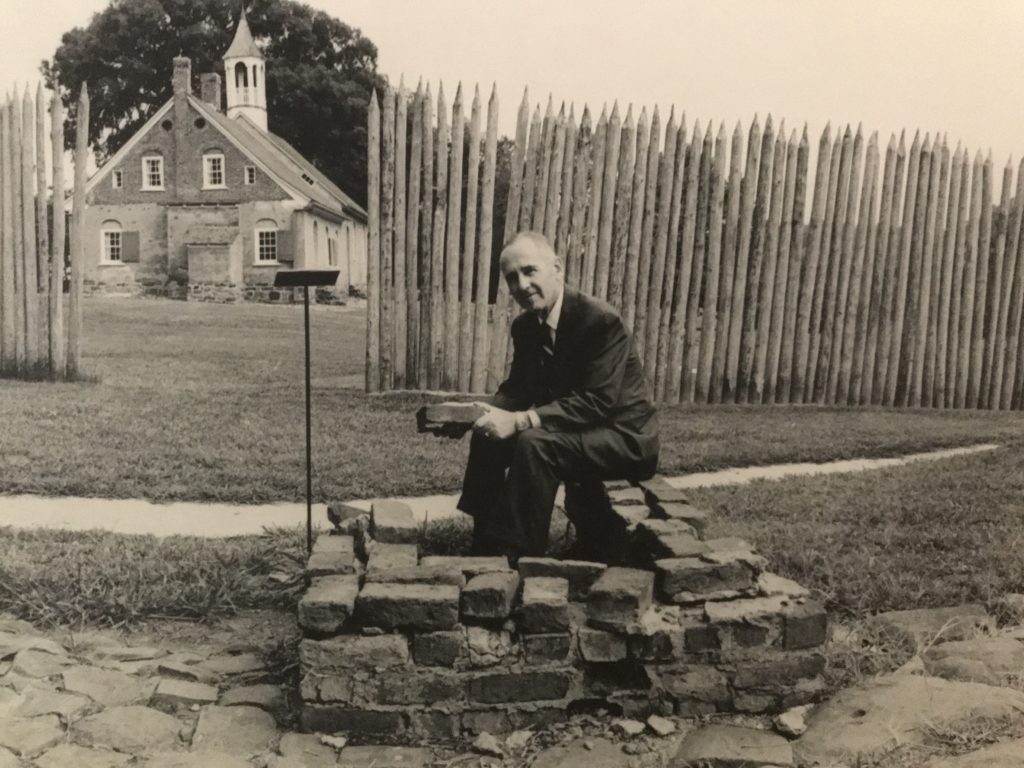
A City of Winston-Salem Park and National Historic Landmark, Bethabara is the site of the first Moravian settlement in North Carolina. In 1753, fifteen Moravians set out on a long journey down the Great Wagon Road from Pennsylvania to North Carolina and settled a small village, naming it Bethabara or “house of passage.” By the 1760s, Bethabara had developed into a bustling industrial trade center. After the completion of Salem, the population of Bethabara decreased, but remained an active agricultural community through the early 20th century.
After archaeological excavations in the 1960s, the founding Chair of Historic Bethabara Park’s Board of Trustees, Edwin L. Stockton (1905-1987), championed early efforts to preserve and interpret Bethabara as a historic park.
“My main interest in this project has been to preserve an area which could have easily met the future of the bulldozer and the condominium. My interest has covered a period of years and has been a matter of dedication to the preservation of a significant site for posterity. We are indeed talking about hallowed ground.”
Through his vision, dedication, and thirty-five years of volunteer effort, he ensured the preservation of Bethabara. To honor Stockton, Historic Bethabara Park’s Board of Trustees named the Visitor Center in his honor and opened its doors in 1983.
Today, the park offers free special events, 183 acres of wildlife preserve, historic gardens, over 10 miles of trails, centuries-old buildings, a reconstructed French and Indian War palisade and colonial village, and the 1788 Gemeinhaus Church, the oldest standing church with attached residence in the United States. Follow us on Facebook to stay updated on park programs and special events.
Click here to learn more about the history of colonial Bethabara
